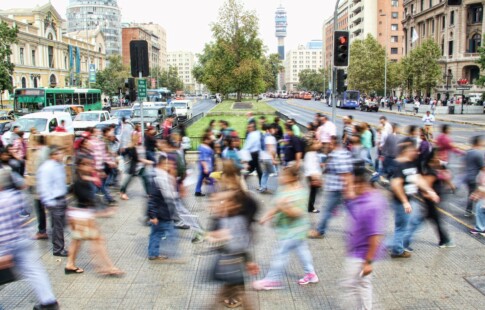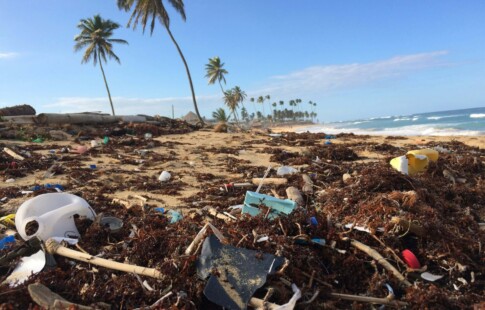
How to Stop Deforestation: A Guide for Forest Stewardship
We are reader-supported. When you buy through links on our site, we may earn affiliate commission.
The world cannot have social and economic well-being without a healthy environment. Forests, in particular, provide numerous functions and resources that all life depends on. Yet, humans have degraded these ecosystems for agriculture, logging, mining, settlement and commodities. A critical undertaking for forest management is dire, and starts with collective action. Here is how to stop deforestation and inspire others to join the movement.
What Is Deforestation, and Where Is it Occurring?
Some people maintain the cultural and religious mindset that humans hold dominion over the Earth. As a result, they have caused widespread ecological damage to reap the rewards of environmental services.
The United Nations Food and Agriculture Organization says people cut down 10 million hectares of forest annually — about 24.7 million acres. Most deforestation occurs in tropical regions, such as the Amazon rainforest, which is also rich in biodiversity.
Cattle ranching is the primary reason for deforestation in every Amazon nation, accounting for 80% of land conversion and emitting 340 million tons of carbon dioxide (CO2) into the atmosphere yearly. Livestock pastures also increase wildfire risks, harm riparian and aquatic habitats, cause soil erosion, and contaminate the environment with feces and other organic matter.
In its trickling effect, 60% of emerging infectious pathogens derive from zoonotic species and are shared between animals and humans. Deforestation drives this phenomenon as humans encroach on habitats, allowing new pathways for spreading disease. Most notably, 11,000 people in West Africa died from Ebola from 2014 to 2016. The first infection occurred after a toddler played near a tree with roosting bats.
5 Ways to Stop Deforestation
It is crucial to prevent deforestation from worsening and begin the restoration process globally. Starting small with changes to individual behaviors has a significant impact, but collective action makes the most tremendous difference. Here’s how to stop deforestation for a healthy, thriving planet.
1. Eco-Friendly Sourcing and Consumption
The prominent lifestyle change is reducing meat consumption and opting for a vegetarian or vegan diet. Plant-based eating can minimize land use by 76% and greenhouse gases by 49%.
You should also look for sustainably sourced products, including wood, paper and palm oil. According to one study, palm oil plantations deforest 28% of the Guatemalan region and affect 60% of key biodiversity hot spots.
Purchasing goods from companies committed to protecting forests and adhering to sustainable supply chain management practices is also beneficial. Reducing your consumption and waste stream has significant positive impacts.
2. Sustainable Agriculture
Support local and organic farmers that prioritize environmental stewardship to prevent deforestation where you live and worldwide. Often, grocery stores have a separate section for organic and locally grown products, while you can also find sustainable food at farmers’ markets and farmstands.
Promoting agroforestry, in which farmers integrate trees into their farming systems, also boosts biodiversity and soil health. Research even finds that agroforestry improves public health by expanding nutritional access, improving ecological quality and promoting community well-being. You can even grow your own food sustainably at home.
3. Responsible Forestry
A healthy forest sequesters 7.6 billion metric tons of CO2 annually, 1.5 times more than Americans generate. Surprisingly, younger forests, about 20 to 70 years old, absorb and store the most CO2.
Unfortunately, global forests — particularly in the tropics, Russia and Eastern Europe — are threatened by illegal logging. In fact, 15% to 30% of global timber production comes from authorized logging, with illegal wood estimated to be $50 to $50 billion, making it the third-largest transnational crime worldwide.
You can support responsible forestry by shopping for products with the Forest Stewardship Council (FSC) label and verifying sustainable sourcing. This includes flooring materials, furniture and other everyday household items.
4. Advocacy and Policy Change
Another way to stop deforestation is to advocate for stronger policies that protect them and promote reforestation. Sign and start petitions, lobby government for environmental compliance and hold corporations accountable for degradation. Writing letters and calling your representatives ensures your messaging gets to the right people.
Getting involved in local governments and nonprofit organizations is another way to leverage resources and use your voice to develop a framework for forest conservation. Grassroots activism plays a vital role in advocating for a sustainable future.
Engage in grassroots activism, write to your representatives, and support organizations working to influence policy. By advocating for policy changes, we can create a robust framework that prioritizes forest conservation and ensures a sustainable future for our planet.
5. Reforestation and Afforestation Efforts
Volunteer in tree-planting initiatives in your community to restore degraded landscapes and build a climate-resilient city. Trees and green spaces support forestry and mitigate CO2. You can also rewild your property by allowing your manicured lawn to grow naturally and introducing native plants.
Support and donate to organizations committed to reforestation. These groups are experienced and knowledgeable about these ecosystems and take a strategic approach to restoration, especially reintroducing native tree species.
Empowering Communities to Prevent Deforestation
Although individual efforts count, there is great power in numbers. Therefore, raising awareness of forest devastation and encouraging participation in green initiatives is the key to change. Speaking to students and community members, starting nonprofit organizations, and utilizing social media platforms are excellent ways to garner attention.
It is also vital to support Indigenous communities by recognizing their rights and learning from their ways of life. From the Miccosoukees in the Florida Everglades to the Yanomami, Kayapo, and Ashaninka in the Amazon, these people often employ more effective conservation efforts than land managers, even as outsiders continuously threaten the land.
Combating Deforestation One Tree at a Time
One person cannot prevent deforestation alone, but individual efforts still make a difference. Encouraging collective action is critical for saving the world’s forests and essential environmental resources and services. It just takes a single person who cares to advocate for positive change and optimism about the future.
Frequently Asked Questions
Where Can You Find Native Plants Near You?
Check local nurseries and garden centers for plants native to your region. Botanical gardens and nature centers also host occasional plant sales or can direct you to nearby sellers. You can also visit online databases for regional flora information or explore native plant societies and conservation initiatives for expert guidance.
How Do You Write a Letter to Your Representative About Deforestation?
Search for your representatives’ contact information on your state or city’s government website. Start your letter by stating the issues and policies you want them to support or oppose. You should also explain why the problem is essential to you, such as a personal story. Perhaps you visited a national park or have Indigenous roots with cultural ties to the land. Always keep your letter concise and respectful.
What Forest-Friendly Labels and Certifications Should I Look for When Buying Products?
The FSC label is the gold standard for wood and paper products, guaranteeing forest preservation. If you are buying palm oil, look for the Roundtable on Sustainable Palm Oil certification. Likewise, the Programme for the Endorsement of Forest Certification certifies responsibly sourced products.
Share on
Like what you read? Join other Environment.co readers!
Get the latest updates on our planet by subscribing to the Environment.co newsletter!
About the author

Steve Russell
Steve is the Managing Editor of Environment.co and regularly contributes articles related to wildlife, biodiversity, and recycling. His passions include wildlife photography and bird watching.





